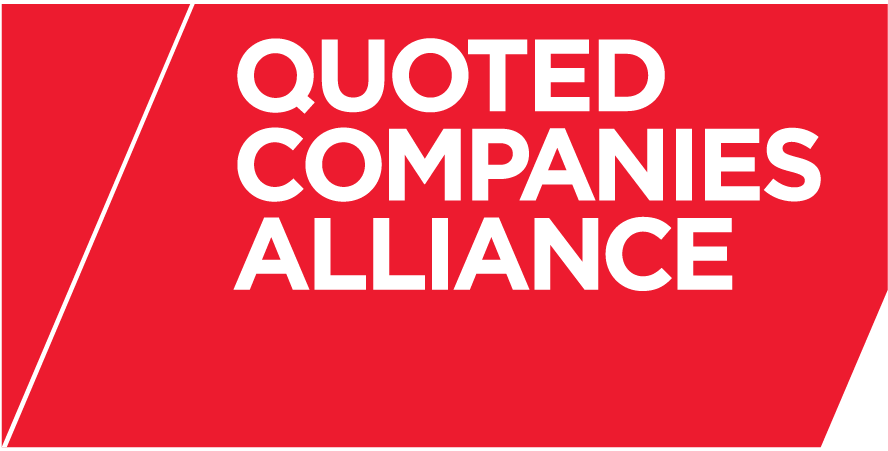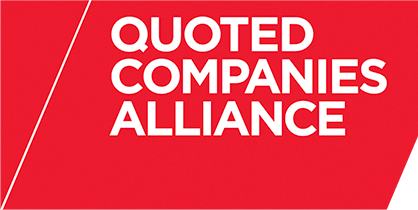This briefing explains the new regime for the disclosure of inside information by companies admitted to trading on AIM. The new regime comes into effect on 3 July 2016.
AIM Companies will need to comply with the relevant requirements of the AIM Rules for Companies (AIM Rules) and with Article 17 (Public disclosure of inside information) of the EU Market Abuse Regulation (MAR) and the related implementing regulation.
Guidelines will be available from the European Securities and Markets Authority (ESMA). The Financial Conduct Authority (FCA) has published disclosure guidance based on the previous disclosure rules which currently only apply to listed companies. AIM Companies should consider the guidelines and guidance published by both bodies. Some of the regulations and guidelines have not been published in final form so it's very much a case of watch this space.
In addition, AIM Companies will subject to the new powers which will be conferred on the FCA by the Financial Services and Markets Act 2000 (Market Abuse) Regulations 2016. These powers cover information gathering, the publication of information, publication of corrective statements and suspension of trading.
Separate briefings explain the new MAR regime for insider lists and the notification of transactions by PDMRs and PCAs and restrictions on dealings by PDMRs during close periods.
Inside information: the rules and guidance for AIM Companies
The following rules and guidance on the release and control of inside information now apply to AIM Companies:
the AIM Rules
- Article 17 of MAR
- the implementing regulation published by the Commission
- the guidelines published by ESMA
- the disclosure guidance published by the FCA (DTR 1 and DTR 2).
Unfortunately these requirements are not contained in a single comprehensive standalone document. Further details on each of them are set out below.
AIM Rules
AIM Rule 11 (General disclosure of price sensitive information) has been retained. The Guidance Notes to AIM Rule 11 have been amended to reflect the introduction of article 17 of MAR.
Following publication of the revised AIM Rules on 14 June 2016, AIM Regulation stated that it will keep the operation of the AIM Rules under review and in particular will monitor how they work in practice following the implementation of MAR. AIM Regulation will also monitor any changes in the implementing regulations and guidelines related to MAR that are made post 3 July 2016 which may require further changes to the AIM Rules.
AIM Companies should note that compliance with MAR does not mean that an AIM Company will have satisfied its obligations under the AIM Rules and vice versa.
Market Abuse Regulation
Under MAR, an AIM Company must, subject to some limited exceptions, inform the public as soon as possible of inside information which directly concerns that company (Article 17 (1) MAR).
The company must also ensure that all inside information which it has publicly disclosed is available on its website for a period of at least five years. Disclosure of inside information to the public must not be combined with the marketing of the company's activities.
Appropriate public disclosure
When an AIM Company discloses inside information it must ensure that:
- the inside information is disseminated:
- to as wide a public as possible on a non-discriminatory basis
- free of charge
- simultaneously throughout the EU.
- the regulatory announcement containing the inside information must clearly identify
- that the information communicated is inside information
- the identity of the issuer
- the identity of the person making the notification
- the subject matter of the inside information
- the date and time in which it is taking place.
These detailed requirements will be set out in Article 2(1) of the Commission Implementing Regulation laying down implementing technical standards with regard to the technical means for appropriate public disclosure of inside information according to MAR. The final form of these requirements is not yet available.
There is some uncertainty as regards how companies should make it clear to investors that the information contained in a regulatory announcement is inside information. Some market participants have suggested adding a rubric that "The information contained in this announcement may constitute inside information" or alternatively a general reference such as "The information contained in this announcement includes inside information".
We assume that the requirement to identify the person making the notification will be satisfied by naming the individual arranging the release of the announcement but that has not been confirmed.
Website
Article 3 of the draft Commission Implementation Regulation also covers the manner in which an AIM Company makes inside information available on its website.
The company's website must:
- allow users to access the inside information posted on the website in a non-discriminatory manner and free of charge
- allow users to locate the inside information in an easily identifiable section of the website
- ensure the disclosed inside information clearly indicates the date and time of disclosure and is organised in chronological order.
Delayed disclosure: conditions
An AIM Company may delay disclosure to the public of inside information provided that all of the following conditions are met:
- immediate disclosure is likely to prejudice the legitimate interests of the company
- delay is not likely to mislead the public
- the company is able to ensure the confidentiality of that information (Article 17 (4) MAR).
Where disclosure of inside information has been delayed in accordance with Article 17 (4) and the confidentiality of that inside information is no longer ensured, the AIM Company must disclose that inside information to the public as soon as possible (Article 17 (7) MAR).
Obligation to notify the FCA and detailed record keeping requirements
If an AIM Company is in possession of inside information and it decides to delay disclosure in the circumstances permitted by MAR, the AIM Company must comply with the following requirements of Article 17 (4) MAR and Article 4 of the draft Commission Implementing Regulation:
- the AIM Company must inform the FCA that disclosure was delayed – the FCA has published a standard form for use in this situation (see Delayed disclosure of inside information notification). The notification must include the following information:
- the identity of the issuer;
- the identity of the person making the notification;
- the contact details of the person making the notification;
- identification of the publicly disclosed inside information that was subject to delayed disclosure;
- date and time of the decision to delay the disclosure of inside information; and
- the identity of all persons with responsibilities for the decision of delaying the public disclosure of inside information
- following a request from the FCA, the AIM Company must provide a written explanation of how the conditions which enabled the AIM Company to delay disclosure were satisfied; and
- the AIM Company must comply with the record keeping requirements applicable in these circumstances. These require an AIM Company to keep a record of the following:
- the dates and times when:
- the inside information first existed within the company;
- the decision to delay the disclosure of inside information was made;
- the company is likely to disclose the inside information;
- the identity of the persons within the company responsible for:
- deciding about the start of the delay and its likely end;
- ensuring the on-going monitoring of the conditions for the delay;
- deciding about the public disclosure of the inside information; and
- providing the requested information about the delay and the written explanation to the FCA.
- evidence of the initial fulfilment of the conditions referred to in Article 17(4) of MAR and of any change during the delay period including:
- the information barriers which have been put in place internally to prevent access to inside information by persons other than those who require it for the normal exercise of their employment, profession or duties within the issuer and with regard to third parties; and
- the arrangements put in place in cases where the confidentiality is no longer ensured (e.g. preparation of a holding announcement).
- the dates and times when:
These detailed requirements will be set out in Article 4(1) of the Commission Implementing Regulation laying down implementing technical standards with regard to the technical means for appropriate public disclosure of inside information and for delaying the public disclosure of inside information according to MAR.
Although a draft of these technical standards was published by ESMA on 28 September 2015 the final version has not been published.
The requirements are very prescriptive. Although market practice will emerge over time, it may initially be difficult to identify a precise date on which information about a particular transaction or corporate development becomes inside information for the purposes of MAR. Equally it may be difficult to determine when a corporate transaction is likely to be announced.
Commission Implementing Regulation
The final Commission Implementing Regulation containing the detailed requirements referred to above under "Appropriate public disclosure" and "Delayed disclosure: obligation to notify the FCA and detailed record keeping requirements" will be published in due course. We assume that this will follow the form of the draft regulation contained in Annex XII of the ESMA Final Report dated 28 September 2015.
Guidance
ESMA Guidelines
ESMA will, in accordance with Article 17 (11) MAR, issue guidelines to establish a non-exhaustive and indicative list of:
- legitimate interests of the issuer that are likely to be prejudiced by immediate disclosure of inside information
- situations in which delay is likely to mislead the public
Legitimate interests should include:
- ongoing negotiations if the outcome of those negotiations would likely be jeopardised by immediate public disclosure
- a situation in which the financial viability of the company is in grave and imminent danger if disclosure would seriously prejudice the interests of existing and potential shareholders, jeopardising the conclusion of the negotiations aimed at ensuring financial recovery.
Other legitimate interests include situations in which supervisory board approval is required (which is highly unlikely to be relevant to most AIM Companies incorporated in the UK) or where a public authority (such as the CMA) has imposed requirements in connection with a decision to approve a transaction. Although draft guidelines were issued in January 2016 (see ESMA/2016/162), the final version is not currently available. In January ESMA stated that the guidelines should be finalised in early Q3 2016.
FCA Disclosure Guidance
The disclosure guidance published by the FCA will apply to AIM Companies on 3 July 2016. The guidance covering inside information is contained in DTR 1 and DTR 2 of the Disclosure Guidance and Transparency Rules sourcebook.
DTR 1 contains general guidance. In particular, AIM Companies should note the provisions of DTR 1.3.6. This will be relevant when an AIM Company is required to disclose inside information when a Regulatory Information Service (RIS) is not open for business. In that situation, the AIM Company may distribute the information as soon as possible to:
- not less than two national newspapers in the United Kingdom
- two newswire services operating in the United Kingdom
- a RIS for release as soon as it opens
The current version of this requirement (which only applies to listed companies) states that issuers "must" distribute the information in this manner. The change to "may" is likely to confuse matters in practice.
DTR 2 (Disclosure and control of inside information by issuers): DTR 2 contains guidance on the disclosure of inside information, delaying disclosure of inside information, control of inside information and dealing with rumours. DTR 2 should be read alongside the ESMA Guidelines and the Commission Implementing Regulations referred to above.
This article was written by Nick Graves, Partner at Burges Salmon. For more information, please contact Nick Graves.

